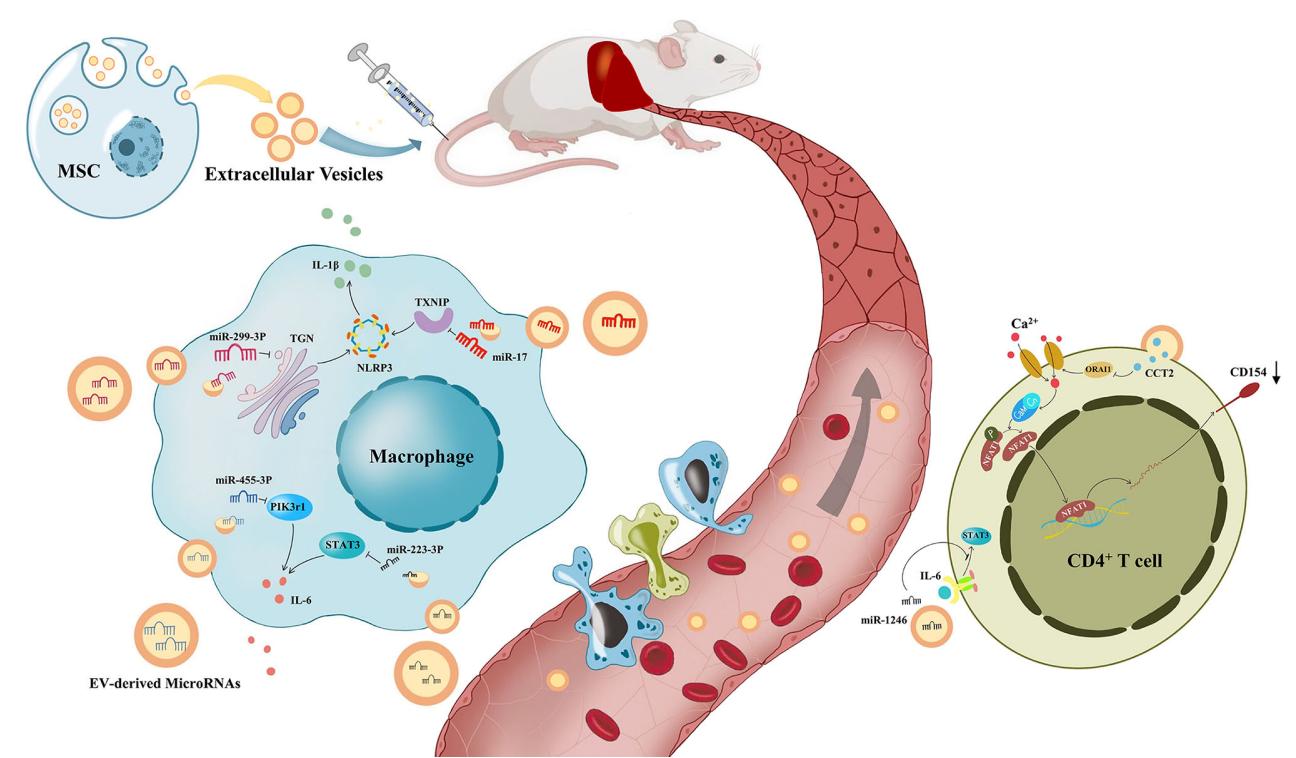Intravenous Exosomes Advantage and Application
Intravenous administration is the most common mode of drug delivery for exosomes. After administration, exosomes rapidly spread throughout the body with blood circulation, showing good delivery stability and rapid drug accumulation, commonly used for targeted delivery of a variety of engineered exosome delivery systems. Creative Biolabs has built a comprehensive platform for exosome isolation, engineering, and cargo-delivery to provide research services for exosome-based nanopharmaceuticals systems.
Introduction to the Intravenous Administration of Exosomes
Intravenous injection is the most widely used mode of drug delivery based on exosome delivery. Exosomes injected into the vein, after the blood circulates, penetrate from the capillaries into the tissues and achieve distribution and enrichment in specific target areas. Only a few exosomes injected intravenously can interact directly with leukocytes and endothelial cells close to the vessel wall, while the majority of exosomes circulate with red blood cells and are removed by uptake by the liver and spleen. The particle size of exosomes may be one of the important factors determining their metabolic distribution. The size of the endothelial cell window in human hepatic sinusoids is about 107 nm. Particles with diameters smaller than this can enter the perisinusoidal space through the endothelial cell window and be captured by hepatic parenchymal cells, while particles larger than the endothelial cell window diameter are blocked outside the liver where they are cleared by the spleen. Fluorescently labeled exosomes were injected from the tail vein of mice and were observed by live imaging to be captured mainly by the liver, spleen, lung, kidney, and bone marrow, with the liver, spleen, and lung showing the strongest fluorescence. Further studies revealed that exosomes were mainly phagocytosed and taken up by macrophages in the liver and spleen. Inhibition of macrophage activity is beneficial to prolong the plasma half-life of exosomes. Intravenous MSC-derived exosomes accumulated mainly in the liver, which could modulate the reduction of IL-6 and IL-1β release by macrophages and decrease CD154 expression by CD4+ T cells, facilitating the improvement of liver inflammation and alleviation of various liver diseases through immunomodulation. The uptake of exosomes by other organs depends mainly on the concentration and circulation time of exosomes in blood circulation. With genetic engineering, exosomes can be given a high affinity for targeting specific tumor antigens and have excellent penetration rates into solid tumors, making the transvenous administration of targeted tumor therapy highly effective. The majority of exosomes currently entering the clinical phase of intravenous administration are used for oncology treatment. In addition, intravenous administration of exosomes can also treat inflammatory and neurodegenerative diseases.
 Fig.1 The process of immune regulation by mesenchymal stem cell-derived extracellular vesicles on the liver. (Wu, 2022)
Fig.1 The process of immune regulation by mesenchymal stem cell-derived extracellular vesicles on the liver. (Wu, 2022)
Intravenous Exosomes Application
Compared to other drug delivery methods, intravenous administration not only allows for easy control of drug dose and concentration but also allows for rapid entry into circulation and effect after administration, eliminating the delay between manipulation and effect. As the most widely applicable mode of drug delivery, intravenous administration of exosomes is particularly suitable for several conditions.
-
Exosome-loaded drug systems need to take effect rapidly and are not easily administered by other modes such as oral, subcutaneous, or intramuscular injections.
-
Exosomal drug delivery systems are not suitable for other injection methods due to high concentration, irritation, and high volume.
-
Exosomal platforms are used for diagnostic and test examinations.
Side effects due to immunogenicity issues after exosome administration are of primary concern, and the factors affecting the safety of exosomes are essentially the same as for other drugs, with the mode of administration being one of the influencing factors. However, due to the naturally low immunogenicity of exosomes inherently, there have been few reports of serious adverse conditions associated with exosomes administered by the intravenous route. In addition, while confirming the good pharmacokinetics as well as pharmacodynamics of the drug, subcutaneous administration combined with intravenous administration is also one of the modes of administration of exosomes, which can ensure the concentration of drug action and prolong the duration of drug action to improve the therapeutic effect.
Intravenous administration of exosomes is the most widely applicable and convenient mode of drug delivery, offering low immunogenicity and rapid drug efficacy. With the engineering of exosomes, intravenous injection of engineered exosomes can enable targeted delivery to tumors and neurodegenerative diseases. Creative Biolabs specializes in providing a wide range of research services including exosome production, modification, and delivery to advance clients' exosome research. Please feel free to contact us to discuss your project.
Reference
-
Wu, R.; et al. Mesenchymal stem cell-derived extracellular vesicles in liver immunity and therapy. Front Immunol. 2022, 13: 833878.
For Research Use Only. Cannot be used by patients.
Related Services:

 Fig.1 The process of immune regulation by mesenchymal stem cell-derived extracellular vesicles on the liver. (Wu, 2022)
Fig.1 The process of immune regulation by mesenchymal stem cell-derived extracellular vesicles on the liver. (Wu, 2022)









